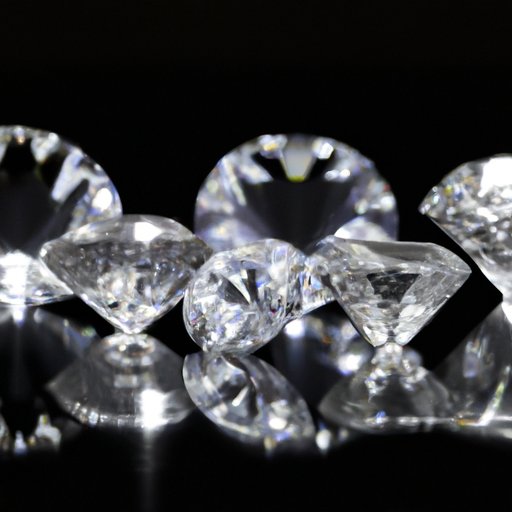Introduction
Diamonds are renowned for their durability and strength, making them a popular choice in the jewellery and industrial markets. But what is stronger than diamond? In this article, we will explore alternative superhard materials that have the potential to be even more robust than diamonds.
Exploring Materials Harder than Diamonds
Before we look at materials that are harder than diamonds, it’s important to understand what makes diamonds so strong. Diamonds are composed of carbon atoms arranged in a very tight lattice structure, which gives them superior strength and hardness. In terms of the Mohs scale of mineral hardness, diamonds rank as a 10 – the highest rating possible.
Now let’s take a look at some of the materials that are harder than diamonds. There are several types of minerals that are naturally harder than diamonds, such as wurtzite boron nitride and lonsdaleite. Additionally, there are many synthetic materials that have been developed in recent years that can be even harder than diamonds. These include cubic boron nitride, nanocrystalline diamond, and diamond-like carbon (DLC).
The properties of these materials vary slightly, but they all have one thing in common – they are all extremely hard and durable. Some of these materials have been used in industrial applications, such as cutting and drilling, due to their superior strength and resistance to wear and tear.

Examining the Strengths of Alternative Superhard Materials
When comparing the strength of natural minerals to synthetic substitutes, it’s important to consider the differences between them. Natural minerals may be more resilient in extreme temperatures, whereas synthetic materials may be more resistant to chemical damage. Depending on the application, one type of material may be more suitable than another.
In addition to exploring existing superhard materials, researchers are also investigating new technologies to enhance the strength of these materials. For example, nanotechnology has been used to create ultra-hard materials with improved strength and wear resistance. These materials could potentially be used in a variety of industrial applications where high levels of strength and durability are required.

Uncovering Innovative Uses for Superhard Materials
Superhard materials have a range of potential uses, from jewellery to industrial equipment. One example is the use of diamonds in drill bits for mining operations. The hardness of diamonds allows them to cut through rock and other tough surfaces with ease.
Another interesting application of superhard materials is in the aerospace industry. These materials are ideal for use in aircraft components due to their ability to withstand extreme temperatures and pressures. They are also resistant to corrosion, making them an ideal choice for parts that need to remain reliable in harsh conditions.

Investigating the Possibility of Creating Artificial Diamonds Stronger Than Natural Ones
While natural diamonds are incredibly strong, scientists are now looking into the possibility of creating artificial diamonds that are even stronger than their natural counterparts. This involves using advanced technologies to manipulate the structure of the diamond and increase its strength.
The process of creating artificial diamonds involves heating and compressing carbon atoms, which are then arranged into a lattice structure similar to that of a natural diamond. This process can produce diamonds that are up to 50% stronger than natural diamonds. However, creating artificial diamonds is a time-consuming and expensive process, and there are some potential drawbacks as well.
For instance, artificial diamonds are not as aesthetically pleasing as natural diamonds and they may contain impurities that can affect their durability. Additionally, artificial diamonds tend to be more brittle than natural ones, meaning they are more prone to breaking or shattering.
Conclusion
In conclusion, diamonds are renowned for their strength and durability, but there are a number of materials that are even harder than diamonds. These include natural minerals such as wurtzite boron nitride and lonsdaleite, as well as synthetic materials such as cubic boron nitride and diamond-like carbon. Additionally, researchers are exploring new technologies to further enhance the strength of these materials and make them even more durable.
Finally, scientists are looking into the possibility of creating artificial diamonds that are even stronger than natural ones. While this process is complex and expensive, it could potentially lead to diamonds that are significantly stronger and more resilient than their natural counterparts.
The potential of superhard materials is vast, and they have a range of potential uses, from jewellery to aerospace components. As research continues to unlock the potential of these materials, we can expect to see even more innovative applications in the future.


